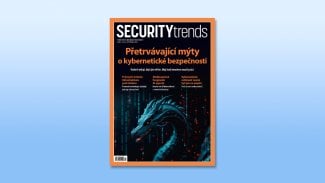ldif
NAME
ldif - LDAP Data Interchange Format
DESCRIPTION
The LDAP Data Interchange Format (LDIF) is used to represent LDAP
entries and change records in text form. LDAP tools, such as
ldapadd(1) and .BR ldapsearch (1), read and write LDIF entry
records. ldapmodify(1) reads LDIF change records.
This manual page provides a basic description of LDIF. A
formal specification of LDIF is published in RFC 2849.
ENTRY RECORDS
LDIF entry records are used to represent directory entries. The basic
form of an entry record is:
dn: <distinguished name> <attrdesc>: <attrvalue> <attrdesc>: <attrvalue> <attrdesc>:: <base64-encoded-value> <attrdesc>:< <URL> ...
The value may be specified as UTF-8 text or as base64 encoded data,
or a URI may be provided to the location of the attribute value.
A line may be continued by starting the next line with a single space
or tab, e.g.,
dn: cn=Barbara J Jensen,dc=exam ple,dc=com
Lines beginning with a sharp sign ('#') are ignored.
Multiple attribute values are specified on separate lines, e.g.,
cn: Barbara J Jensen cn: Babs Jensen
If an value contains a non-printing character, or begins
with a space or a colon ':', the <attrtype> is followed by a
double colon and the value is encoded in base 64 notation. e.g.,
the value " begins with a space" would be encoded like this:
cn:: IGJlZ2lucyB3aXRoIGEgc3BhY2U=
If the attribute value is located in a file, the <attrtype> is
followed by a ':<' and a file: URI. e.g., the value contained
in the file /tmp/value would be listed like this:
cn:< file:///tmp/valueOther URI schemes (ftp,http) may be supported as well.
Multiple entries within the same LDIF file are separated by blank
lines.
ENTRY RECORD EXAMPLE
Here is an example of an LDIF file containing three entries.
dn: cn=Barbara J Jensen,dc=example,dc=com cn: Barbara J Jensen cn: Babs Jensen objectclass: person description:< file:///tmp/babs sn: Jensen dn: cn=Bjorn J Jensen,dc=example,dc=com cn: Bjorn J Jensen cn: Bjorn Jensen objectclass: person sn: Jensen dn: cn=Jennifer J Jensen,dc=example,dc=com cn: Jennifer J Jensen cn: Jennifer Jensen objectclass: person sn: Jensen jpegPhoto:: /9j/4AAQSkZJRgABAAAAAQABAAD/2wBDABALD A4MChAODQ4SERATGCgaGBYWGDEjJR0oOjM9PDkzODdASFxOQ ERXRTc4UG1RV19iZ2hnPk1xeXBkeFxlZ2P/2wBDARESEhgVG ...
Note that the description in Barbara Jensen's entry is
read from file:///tmp/babs and the jpegPhoto in Jennifer
Jensen's entry is encoded using base 64.
CHANGE RECORDS
LDIF change records are used to represent directory change requests.
Each change record starts with line indicating the distinguished
name of the entry being changed:
dn: <distinguishedname>
changetype: <[modify|add|delete|modrdn]>
Finally, the change information itself is given, the format of which
depends on what kind of change was specified above. For a changetype
of modify, the format is one or more of the following:
add: <attributetype> <attrdesc>: <value1> <attrdesc>: <value2> ... -
Or, for a replace modification:
replace: <attributetype> <attrdesc>: <value1> <attrdesc>: <value2> ... -
If no attributetype lines are given to replace,
the entire attribute is to be deleted (if present).
Or, for a delete modification:
delete: <attributetype> <attrdesc>: <value1> <attrdesc>: <value2> ... -
If no attributetype lines are given to delete,
the entire attribute is to be deleted.
For a changetype of add, the format is:
<attrdesc1>: <value1> <attrdesc1>: <value2> ... <attrdescN>: <value1> <attrdescN>: <value2>
For a changetype of modrdn or moddn,
the format is:
newrdn: <newrdn> deleteoldrdn: 0 | 1 newsuperior: <DN>
where a value of 1 for deleteoldrdn means to delete the values
forming the old rdn from the entry, and a value of 0 means to
leave the values as non-distinguished attributes in the entry.
The newsuperior line is optional and, if present, specifies the
new superior to move the entry to.
For a changetype of delete, no additional information
is needed in the record.
Note that attribute values may be presented using base64 or in
files as described for entry records. Lines in change records
may be continued in the manner described for entry records as
well.
CHANGE RECORD EXAMPLE
The following sample LDIF file contains a change record
of each type of change.
dn: cn=Babs Jensen,dc=example,dc=com changetype: add objectclass: person objectclass: extensibleObject cn: babs cn: babs jensen sn: jensen dn: cn=Babs Jensen,dc=example,dc=com changetype: modify add: givenName givenName: Barbara givenName: babs - replace: description description: the fabulous babs - delete: sn sn: jensen - dn: cn=Babs Jensen,dc=example,dc=com changetype: modrdn newrdn: cn=Barbara J Jensen deleteoldrdn: 0 newsuperior: ou=People,dc=example,dc=com dn: cn=Barbara J Jensen,ou=People,dc=example,dc=com changetype: delete
SEE ALSO
"LDAP Data Interchange Format," Good, G., RFC 2849.
ACKNOWLEDGEMENTS
OpenLDAP
is developed and maintained by The OpenLDAP Project (http://www.openldap.org/).
OpenLDAP
is derived from University of Michigan LDAP 3.3 Release.



















